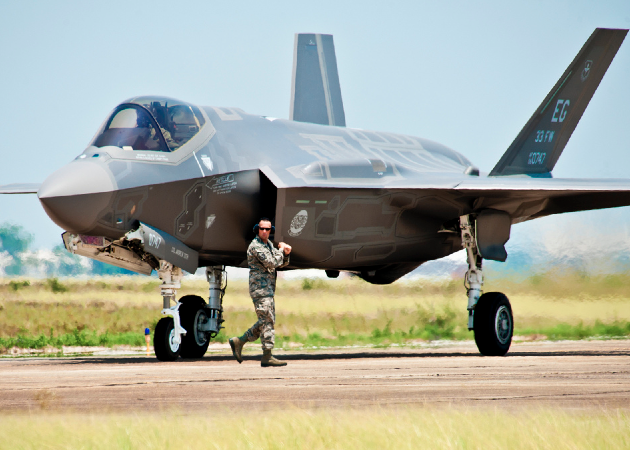The passage of the Ryan-Murray budget plan in the House sends a strong signal that the Pentagon’s budget is basically untouchable. Under the deal, the military’s base budget (which doesn’t include supplemental funding for overseas operations and combat) will be restored to around $520 billion next year—more than it got in 2006 and 2007, when the United States was fighting in both Iraq and Afghanistan.

As Erika Eichelberger reports, the deal could spell the end of efforts to make the Pentagon budget more efficient, particularly in the realm of procurement and contracting. Exhibit A is the F-35 Joint Strike Fighter, the stealthy, high-tech fighter jets that are supposed to do everything from landing on aircraft carriers and taking off vertically to dogfighting and dropping bombs. Faced with sequestration cuts, the Air Force had considered delaying its purchases of the fighters, which are years behind schedule, hugely over budget, and plagued with problems. If the House budget plan becomes law and sequestration is eased for two years, those plans also may be shelved.
More on the pricey plane with a reputation as the biggest defense boondoggle in history:
- Rolling out the F-35 originally was expected to cost $233 billion, but now it’s expected to cost nearly $400 billion. The time needed to develop the plane has gone from 10 years to 18.

- Lockheed says the final cost per plane will be about $75 million. However, according to the Government Accountability Office, the actual cost has jumped to $137 million.
- It was initially estimated that it could cost another $1 trillion or more to keep the new F-35s flying for 30 years. Pentagon officials called this “unaffordable”—and now say it will cost only $857 million. “This is no longer the trillion-dollar [aircraft],” boasts a Lockheed Martin executive.
- Planes started rolling off the assembly line before development and testing were finished, which could result in $8 billion worth of retrofits.
- A 2013 report by the Pentagon inspector general identified 719 problems with the F-35 program. Some of the issues with the first batch of planes delivered to the Marines:
- Pilots are not allowed to fly these test planes at night, within 25 miles of lightning, faster than the speed of sound, or with real or simulated weapons.
- Pilots say cockpit visibility is worse than in existing fighters.
- Special high-tech helmets have “frequent problems” and are “badly performing.”
- Takeoffs may be postponed when the temperature is below 60°F.
- The F-35 program has 1,400 suppliers in 46 states. Lockheed Martin gave money to 425 members of Congress in 2012 and has spent $159 million on lobbying since 2000.
- Remember this bumper sticker?

And those are fancy, San Francisco foodie cupcakes.


















